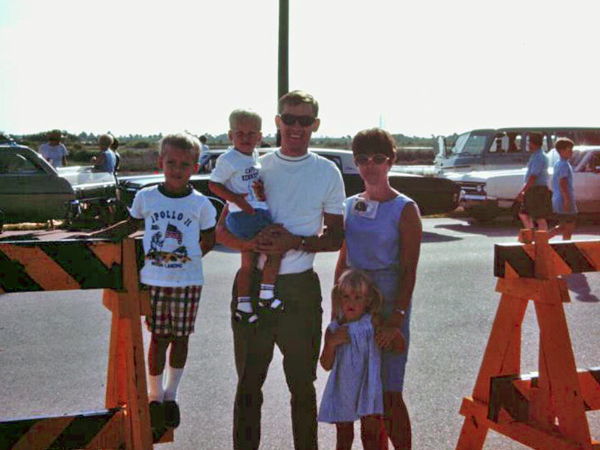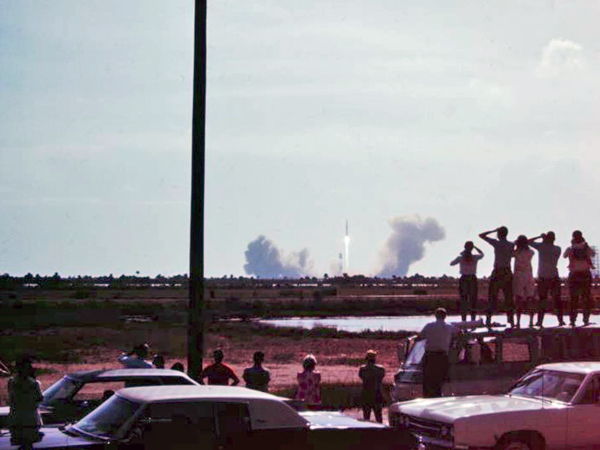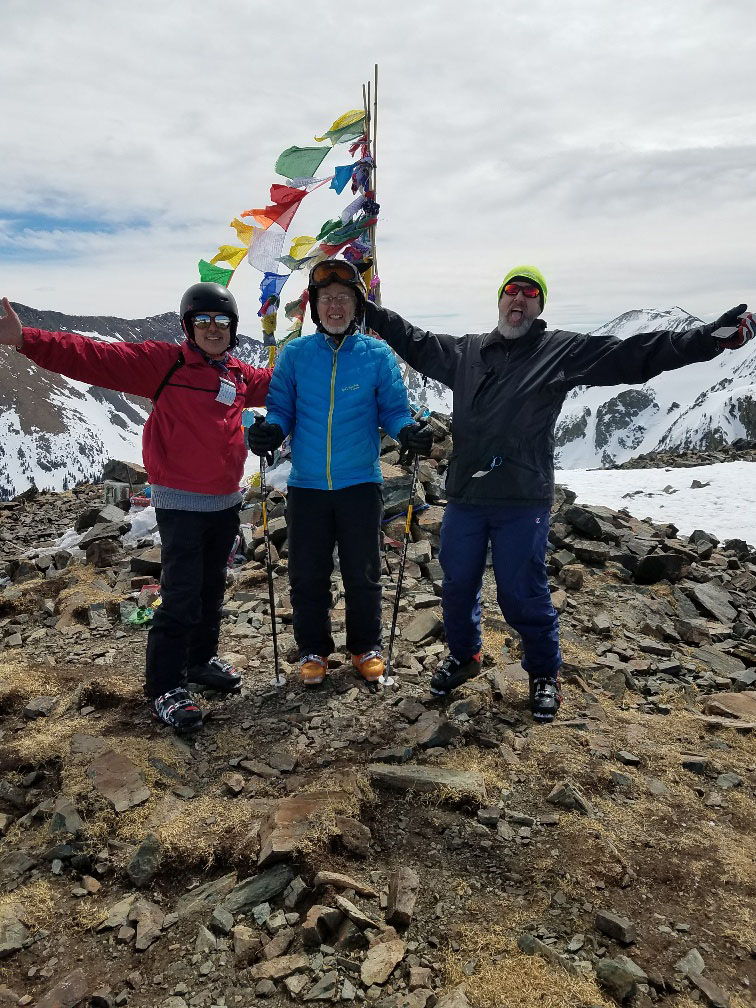Step by Step: David Schultz Led Training for Historic Moon Walk


Dr. David C. Schultz, Sr. (University of Michigan, 1960) wasn’t just another spectator watching the Apollo 11 crew lift off from the Kennedy Space Center in Florida on July 16, 1969. Schultz had worked directly with the astronauts coordinating training for their extravehicular activity—the moonwalk.
Joined by his wife Barbara and children ages two, three and a half and six, Schultz said he felt privileged to be among the few thousand people on the grounds of the Kennedy Space Center as more than a million people gathered in Florida to watch the launch that morning. His family made an early morning drive from their apartment in nearby Cocoa Beach, about 20 miles south of the Space Center to witness the 8:32 a.m. launch. They had been in Florida for about a month having traveled from Houston, where Schultz worked at the Manned Spacecraft Center, later named the Johnson Space Center.
“Through a series of lucky breaks, I became the leader of a small group of NASA engineers who worked directly with the astronauts on one of the most crucial phases of their mission, that of preparing for their historic walk on the moon,” said Schultz. “In fact, Neil Armstrong said at a pre-launch press conference that the most difficult part of their mission was the very part I was working on, getting ready for the walk on the moon, or EVA (extravehicular activity).”
Schultz was a hands-on group leader assigned to this specific mission. “Since this was recognized as a critical mission phase, it was considered essential that training for this phase continued until the last possible moment. Thus, I moved to Florida for the month before the planned launch and conducted training with Armstrong and Aldrin quite a few times during that period,” he said.
Training took place in a full-scale lunar module. “The guys were typically wearing their spacesuits. I would conduct the sessions and we had suit technicians to make sure all the suit hardware was okay,” said Schultz. “One of the things I’ve always carried with me from those experiences—I’m firmly convinced that one of the reasons we were so successful—besides an infinite number of pieces of hardware working right—was we’d developed extremely detailed procedures which the astronauts had on board in the form of checklists. They followed these procedures very intimately. They carried a supply of checklists on board, several of which I was involved with. I think that was a large factor in our success.”
Detailed training procedures included putting on the backpack which carried life support and communications systems. The team developed roughly 30 pages of procedures to verify everything was working, check antennas, confirm suit integrity and prepare equipment to gather lunar samples.
Schultz didn’t work in the Mission Control Center, so after the launch, he and his family made the 1,000-mile drive back to Houston. “I reverted from training and space to being on the road with a car full of kids,” he said. “But I remember watching the landing from home.”
Apollo 11 carried Commander Neil Armstrong, Command Module Pilot Michael Collins and Lunar Module Pilot Edwin "Buzz" Aldrin into an initial Earth-orbit of 114 by 116 miles. An estimated 650 million people watched Armstrong's televised image and heard his voice describe the event as he took "...one small step for a man, one giant leap for mankind" on July 20, 1969.
“Fifty years ago, we weren’t thinking of this fantastic ‘leap for man,’ and of course those words didn’t come out until a few days later. We were doing a job. I had been doing that same job for several years starting with the Gemini program and then segueing over to the Apollo program. It was a great job and I enjoyed working with the astronauts. In retrospect, I’m pretty sure I wasn’t having any grand thoughts about the infinite scheme of things; it was getting the job done on a day-to-day basis,” said Schultz.
As an undergraduate at the University of Michigan, Schultz also got the job done serving as Delta Chapter treasurer, an experience he found to be extremely valuable. “It was a tremendous learning experience for me to have done the books for two and a half years,” said Schultz. “I was a really poor kid. I had to work my way through school and the treasurer’s job paid a whopping $70 per month and that, combined with other work on campus, helped me work my way through Michigan.”


